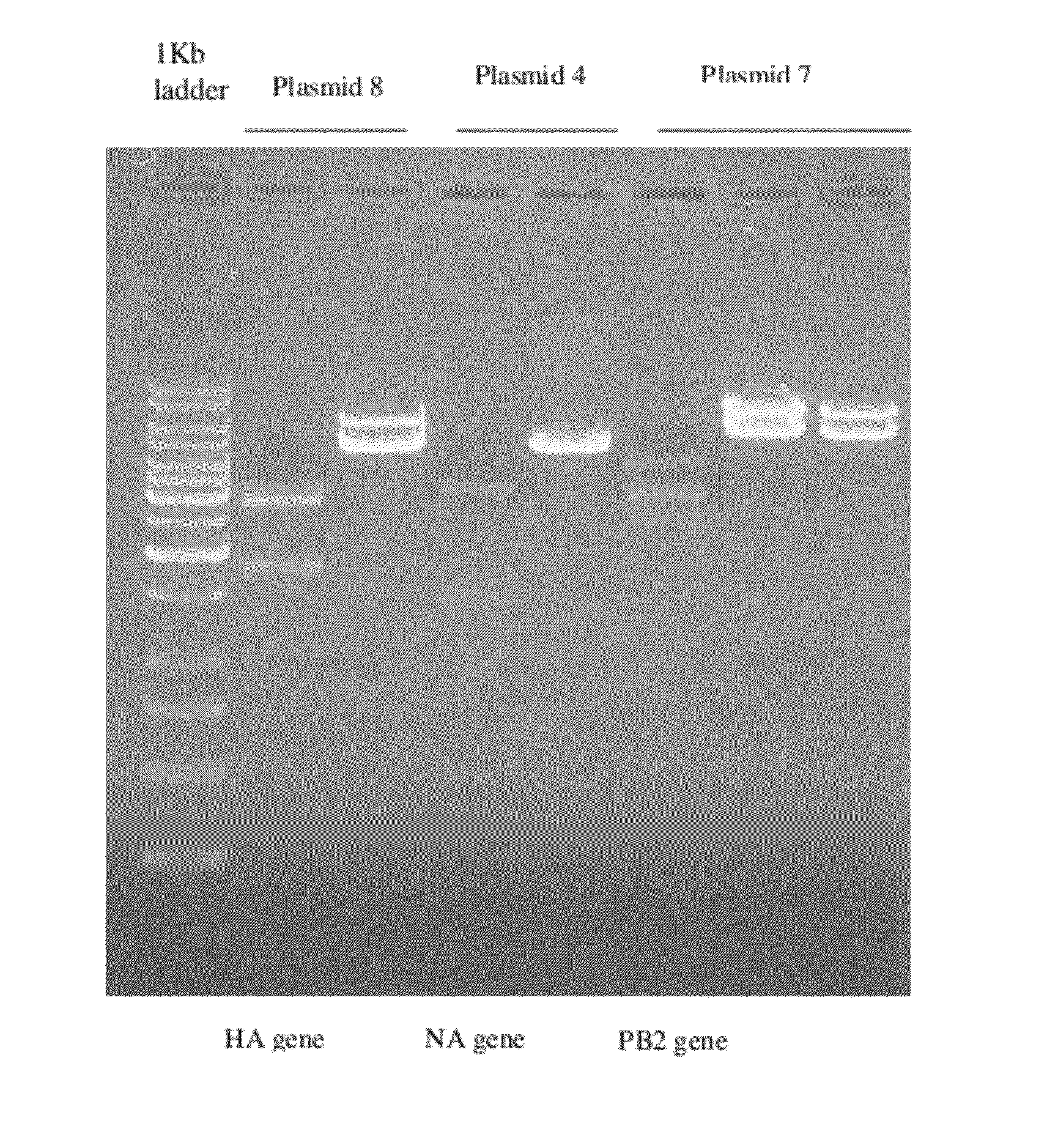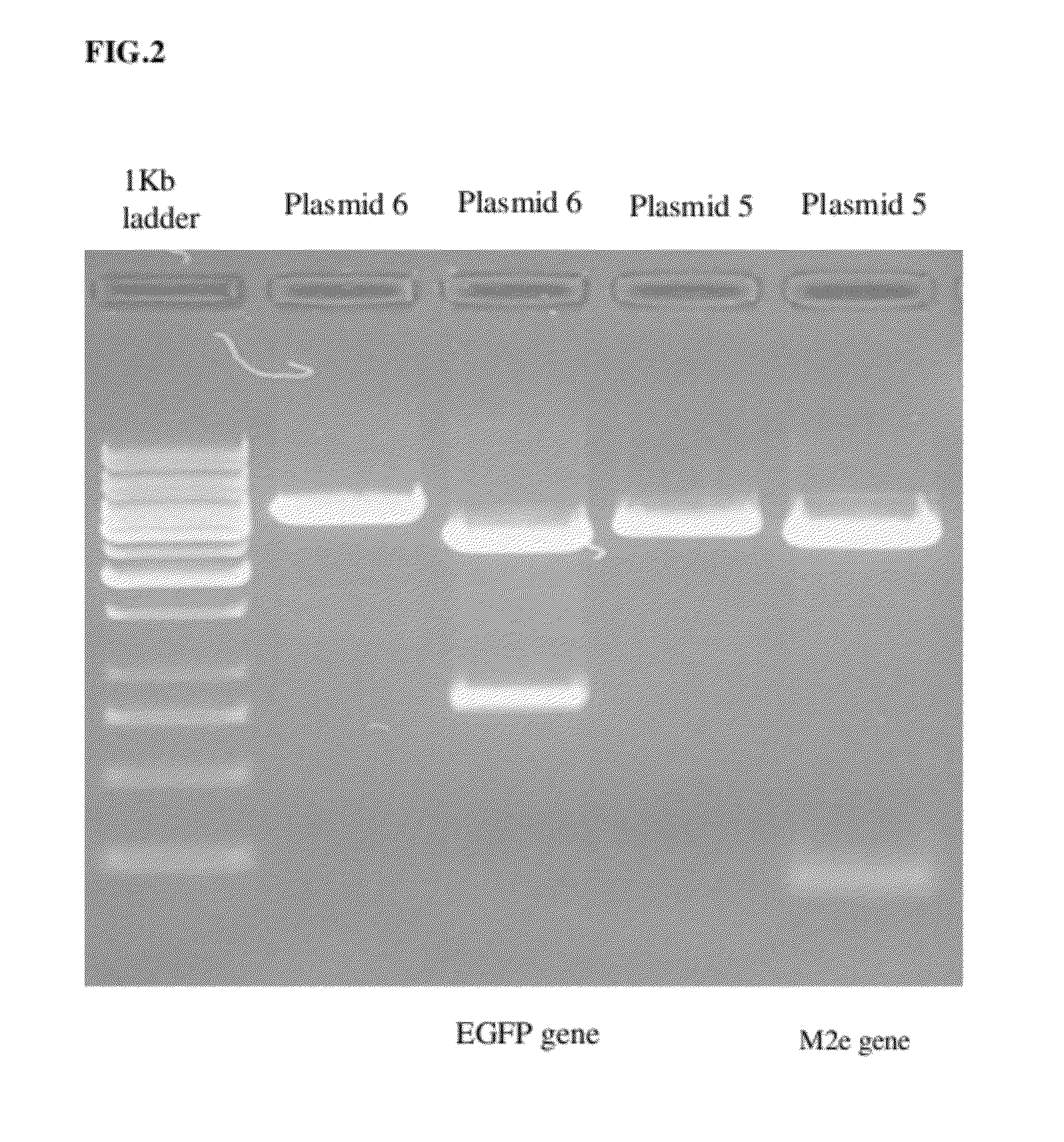Universal influenza vaccine based on recombinant modified vaccine ankara virus (MVA)
a technology of recombinant modified vaccinia ankara and universal vaccine, which is applied in the field of new universal influenza vaccine, can solve the problems of limited human population transmission, low efficacy of influenza vaccine, and inability to use influenza vaccin
- Summary
- Abstract
- Description
- Claims
- Application Information
AI Technical Summary
Benefits of technology
Problems solved by technology
Method used
Image
Examples
example
1. Transformation with Plasmids Having Commercially Synthesized Influenza Genes (HA, NA, M2e, PB2 and EGFP)
[0104]The Hemagglutinin (HA, Accession No.: AY818135), Neuraminidase (NA, Accession No.: AY818141), Matrix protein 2 ectodomain (M2e, Accession No.: AY651388) Polymerase basic subunit 2 (PB2, Accession No.: AY651719) genes of A / Vietnam / 1203 / 04 strain of H5N1 and Enhanced Green Fluorescent Protein gene (EGFP, Accession No.: U57609) were procured after synthesis from a commercial source. Each of the genes had promoter p11 and ribosomal binding site kozak sequence in front of the gene. The artificially synthesized genes were cloned in pGA1 / pUC-Kana / pPCR-Script / pGA4 to generate plasmids p8, p4, p5, p7 and p6 respectively. Each of these plasmids was used to transform E. coli DHSalpha competent cells (Maniatis, Sambrook et al, 2001). Two transformed colonies containing each of the plasmids were inoculated in a suitable nutrient medium and plasmids were isolated by using Qiagen kit as...
PUM
 Login to View More
Login to View More Abstract
Description
Claims
Application Information
 Login to View More
Login to View More - R&D
- Intellectual Property
- Life Sciences
- Materials
- Tech Scout
- Unparalleled Data Quality
- Higher Quality Content
- 60% Fewer Hallucinations
Browse by: Latest US Patents, China's latest patents, Technical Efficacy Thesaurus, Application Domain, Technology Topic, Popular Technical Reports.
© 2025 PatSnap. All rights reserved.Legal|Privacy policy|Modern Slavery Act Transparency Statement|Sitemap|About US| Contact US: help@patsnap.com



